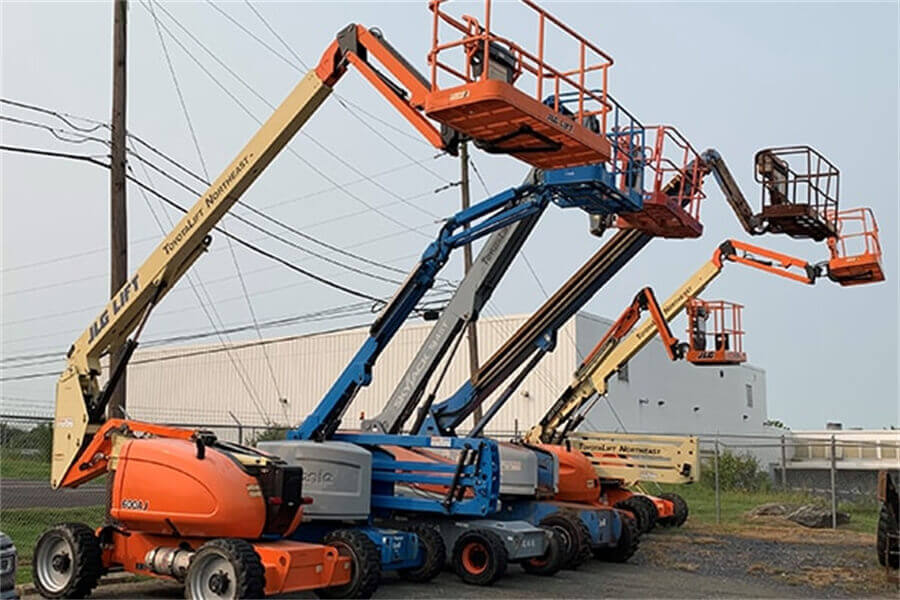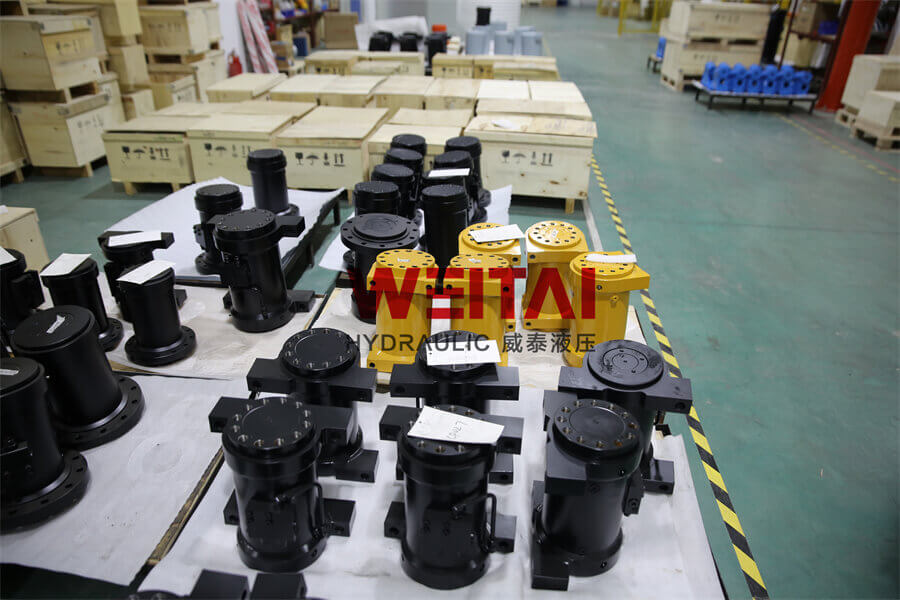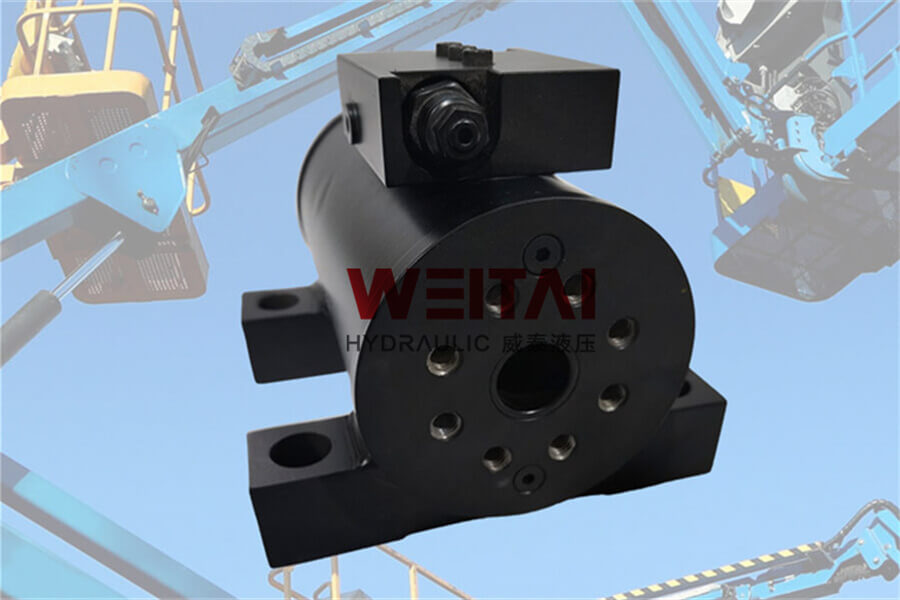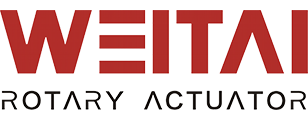Hydraulic rotary actuators are crucial components in aerial work platforms (AWPs), providing the necessary motion control for lifting and rotating the platform. However, like any mechanical system, they can encounter issues that affect performance, safety, and productivity. In this blog post, we’ll explore some common problems associated with hydraulic rotary actuators in AWPs and provide practical solutions to fix them.

1. Hydraulic Fluid Leaks
Issue:
Hydraulic fluid leaks are one of the most common issues with rotary actuators. Leaks can occur due to worn seals, damaged hoses, or loose fittings, leading to a loss of hydraulic pressure and reduced performance.
Fix:
Inspect Seals and Hoses: Regularly inspect the actuator’s seals and hoses for signs of wear, cracks, or damage. Replace any worn or damaged parts immediately.
Tighten Fittings: Check all fittings and connections to ensure they are tight. Loose fittings can often be the source of leaks.
Use the Right Hydraulic Fluid: Ensure you’re using the correct type and grade of hydraulic fluid as specified by the manufacturer. Incorrect fluid can cause seal degradation and leaks.
2. Slow or Erratic Movement
Issue:
If the aerial work platform’s movements become slow or erratic, it could indicate a problem with the hydraulic rotary actuator. This issue often arises due to low hydraulic fluid levels, air in the hydraulic system, or a clogged filter.
Fix:
Check Hydraulic Fluid Levels: Low fluid levels can cause slow or jerky movements. Refill the hydraulic reservoir to the proper level.
Bleed the Hydraulic System: Air trapped in the hydraulic lines can cause erratic movement. Bleed the system to remove any air bubbles.
Replace or Clean Filters: A clogged hydraulic filter can restrict fluid flow, causing slow or irregular movement. Clean or replace the filter as needed.
3. Overheating of the Hydraulic System
Issue:
Overheating is a common issue in hydraulic systems, including rotary actuators. Overheating can result from excessive load, insufficient cooling, or prolonged operation, leading to reduced efficiency and potential damage to the system.
Fix:
Monitor Load Conditions: Ensure the aerial work platform is not being overloaded, as this can cause the hydraulic system to overheat.
Check the Cooling System: Inspect the hydraulic system’s cooling components, such as fans or heat exchangers, to ensure they are functioning properly.
Allow for Cool-Down Periods: If the AWP is used continuously for extended periods, allow for regular cool-down intervals to prevent overheating.

4. Excessive Noise or Vibration
Issue:
Unusual noise or vibration coming from the hydraulic rotary actuator can indicate problems such as misalignment, worn components, or cavitation within the hydraulic system.
Fix:
Inspect for Misalignment: Check the alignment of the actuator and the connected components. Misalignment can cause excessive wear and noise.
Replace Worn Parts: Inspect the actuator’s internal components, such as bearings or gears, for signs of wear. Replace any worn parts to reduce noise and vibration.
Address Cavitation: Cavitation occurs when air bubbles form in the hydraulic fluid, causing a knocking noise and vibration. Ensure the system is properly bled, and check the fluid levels and pump conditions.
5. Sticking or Jamming of the Actuator
Issue:
A sticking or jamming actuator can be dangerous, as it may prevent the aerial work platform from moving as intended. This problem is often caused by contamination in the hydraulic fluid or mechanical obstructions within the actuator.
Fix:
Flush the Hydraulic System: Contaminants in the hydraulic fluid can cause sticking or jamming. Perform a complete system flush and replace the fluid with clean, high-quality hydraulic oil.
Inspect for Obstructions: Disassemble the actuator if necessary and inspect for any mechanical obstructions or debris. Clean and reassemble the actuator, ensuring all components move freely.
6. Inconsistent or Weak Power Output
Issue:
If the actuator is delivering inconsistent or weak power, it can compromise the safety and effectiveness of the aerial work platform. This issue may be due to worn internal components, low hydraulic pressure, or a malfunctioning pump.
Fix:
Check Hydraulic Pressure: Use a pressure gauge to check if the hydraulic system is maintaining the correct pressure. If the pressure is low, inspect the pump and pressure relief valves for any issues.
Replace Worn Components: Internal wear and tear, such as worn gears or seals, can lead to inconsistent power output. Replace any worn components to restore proper function.
Service the Pump: If the pump is malfunctioning, it may need to be serviced or replaced to ensure consistent hydraulic pressure and power.

Conclusion
Hydraulic rotary actuators are vital for the smooth operation of aerial work platforms, but they can encounter various issues that affect performance and safety. By understanding these common problems and implementing the recommended fixes, you can maintain your AWP in top working condition, minimizing downtime and ensuring safe operation. Regular maintenance and timely repairs are key to extending the lifespan of your hydraulic system and keeping your equipment running smoothly.
